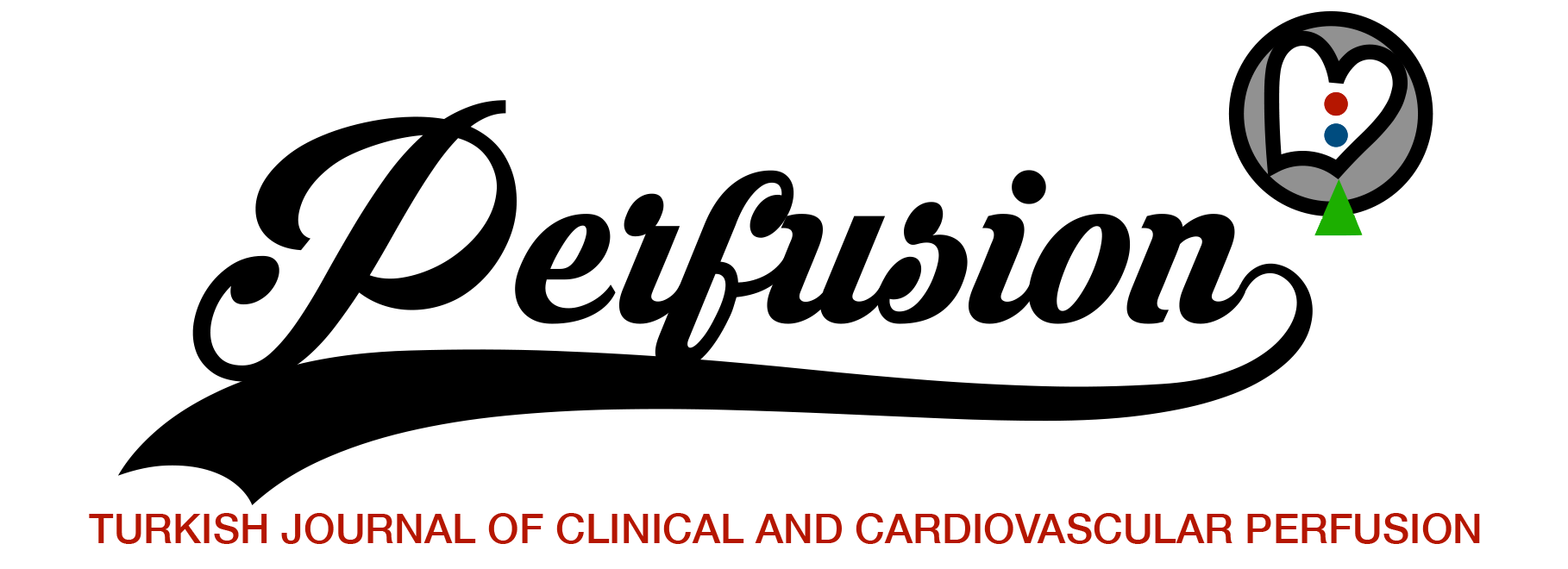ABSTRACT
Objective:
It is a routine procedure to switch to cardiopulmonary bypass (CPB) with a heart-lung machine by choosing pulsatile or non-pulsatile flow in adult cardiac surgery. It is known that the changes in circulatory physiology caused by the CPB procedure also have negative effects on cerebral blood flow. However, the superiority of current types over each other is discussed. In this study, our aim is to investigate the possible effect of the preferred flow selection during CPB on cerebral perfusion with cerebral near infrared spectroscopy (NIRS) method.
Materials and Methods:
In this study, our aim is to investigate the possible effect of the preferred flow selection during CPB on cerebral perfusion with cerebral NIRS method. A total of 60 patients with pulsatile flow (group: 1) n=30 and non-pulsatile flow (group: 2) n=30 were included in the study. A roller pump (Stöckert SV, Sorin Group Deutchland GMBH, München) was used for both pulsatile and non-pulsatile flow. Pre-CPB, pre-cross-clamp, post-cross-clamp (10. min) and CPB end values were recorded with the NIRS device placed in the frontal lobe unilaterally in both groups. In addition, preoperative and postoperative biochemistry and blood gas values (pH, lactate, creatinine, blood urea nitrogen, aspartate aminotransferase, alanine aminotransferase), changes in ejection fraction, length of stay in the intensive care unit, extubation times and hospital stay were recorded and compared. The obtained data were evaluated statistically.
Results:
A statistically significant difference was observed in terms of ventilation duration according to the groups (p<0.05). A statistically significant difference was found between the two groups in the postoperative 2nd hour venous and arterial lactate values. No significant difference was observed in other parameters (p>0.05).
Conclusion:
In the light of the data we have obtained, it has been observed that the types of current applied during the cross clamp in CPB have different effects in terms of some variables.



